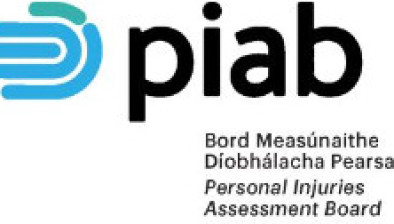High Court: Woman injured by closing lift doors loses claim against her employer
A woman who was hit on the head by closing lift doors at her work premises, has lost her claim for damages as it was concluded that the incident was caused by her own negligence.

About this case:
- Citation:[2019] IEHC 79
- Judgment:
- Court:High Court
- Judge:Ms Justice Eileen Creedon
Accepting that the placement of sensors on the lift was consistent with the industry norm, and that voiceover warnings were not a legal or industry requirement, Ms Justice Eileen Creedon concluded that the woman had to bear the responsibility for not paying proper attention as she walked into the lift.
Background
The plaintiff, Ms Geraldine O’Grady, worked in Abbott Ireland Vascular Division in Clonmel since 1999. In July 2014, she was having a conversation with another member of Abbott’s staff when she was struck on the head by closing lift doors.
Ms O’Grady accepted in cross-examination that as a result of her turning away from the lift to continue her conversation, she was not looking at the doors as she was walking into the lift. She did however state that in all the years she had worked at the premises, a voice over would give a warning when the lift doors were either opening or closing, but that there had been no warning on that occasion. The member of staff who witnessed the incident gave evidence that he did not hear the voice over either. Ms O’Grady had also assumed the sensor on the lift would stop it from closing on her.
The High Court accepted that the closing door made contact with Ms O’Grady’s head, and that the impact was to her right temple. She sustained a haematoma to the right temporal area, however there was no bony injury to her skull; and no swelling but tenderness over the area.
She was due to go on holidays shortly after the accident and said that she feared taking her flight because she was concerned about blood clots. However, the company doctor reassured her, and she proceeded to go on holiday. Ms O’Grady said that she suffered headaches during her holiday and had bruising on her face, and when she went back to work she suffered from loss of concentration and headaches.
Ms O’Grady said that she was not an anxious person prior to the accident, but that she suffered from flashbacks and feared she was going to die, and this affected her confidence at work. She indicated that she suffered post-concussion syndrome together with post-traumatic stress disorder and has been prescribed anti-depressants.
Claim for damages
In the High Court, Ms O’Grady made a claim for damages in respect of serious personal injuries, loss, inconvenience and expense incurred as a result of the negligence, breach of duty including breach of statutory duty under the Safety Health and Welfare at Work Act 2005, the General Application Regulations made thereunder, the Occupiers Liability Act 1995 and contract on behalf of Abbott its servants or agents.
Ms O’Grady submitted that Abbott failed to provide her with a safe place and/or system of work, and that the lift did not emit a verbal warning that the doors were closing and/or otherwise warn a user that the doors were closing; and that further, the doors themselves were an excessive width and a danger to users, and that the sensors of the lift were not properly placed and/or did not function correctly.
Failure to pay proper attention
Ms Justice Creedon accepted that voiceover messages were only contained in 40 per cent of lifts nationally, and that this was not a legal or industry requirement. In this regard, Ms Justice Creedon noted O’Flynn v. Cherry Hill Inns Ltd. T/A The Oliver Plunkett Bar [2017] IECA 211, in which Ms Justice Irvine said: “Beyond the home, doors are part of everyday life and automatic doors are no exception. They are commonplace in buildings of every nature. Automatic doors are encountered in every type of public building including hospitals, schools, courts and offices.”
Ms Justice Creedon said the same could be said of lift doors, with or without voiceovers, and that it was not reasonable to consider any adult blameless should they enter through a lift door without paying proper attention and sustain an injury.
Furthermore, Ms Justice Creedon was not satisfied on the evidence that the location of the sensors on the inner door created a “danger zone”. It was accepted that the placement of the sensors was the industry norm, and Ms Justice Creedon concluded that Abbott was not in breach of the reasonably practical test by its failure to locate a sensor on the outer doors.
It was also accepted that this particular lift had been in position since around 2005, was in conformity with relevant European standards, and there was no malfunction. Abbott had a system in place whereby all lifts were examined quarterly (or as necessary if issues arose). A number of call-outs in respect of this particular lift door had been recorded before and after the accident, however, an engineer for Abbott gave uncontradicted evidence that this was not the cause of the accident.
Considering the Health Safety and Welfare at Work Act 2005, Ms Justice Creedon was satisfied that Abbott had fully discharged its duties and was not in breach of the reasonably practicable test by its failure to maintain a uniform application of voiceover warnings.
Ms Justice Creedon noted that section 13 of the Health Safety and Welfare at Work Act 2005 imposed extensive statutory duties on employees, including ‘to take reasonable care to protect his or her safety health and welfare and the safety health and welfare of any other person at work’.
Further, having considered the Occupiers Liability Act 1995 and Abbott’s common law duties, Ms Justice Creedon said that Abbott had discharged its obligations to exercise reasonable care in all of the circumstances to ensure that Ms O’Grady did not suffer injury or damage by reason of any danger existing thereon.
Dismissing Ms O’Grady’s claim, Ms Justice Creedon concluded that the incident was caused by Ms O’Grady’s own inadvertence for which she must bear responsibility.
- by Seosamh Gráinséir for Irish Legal News








